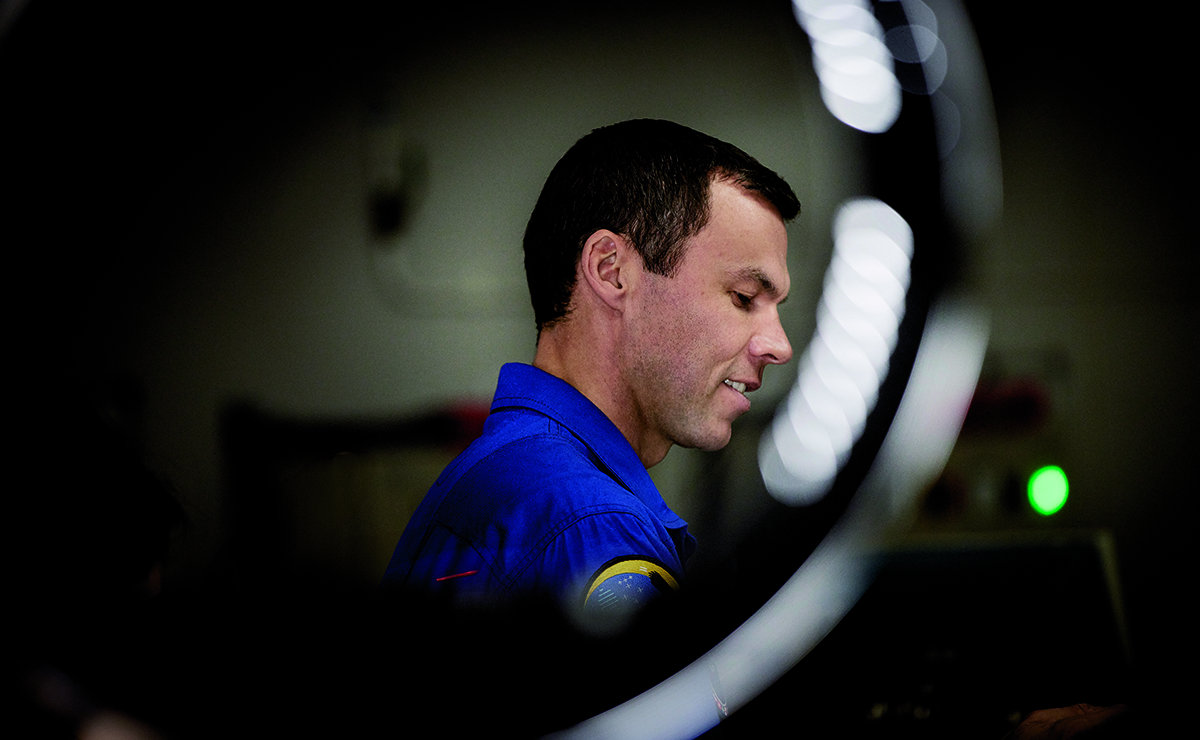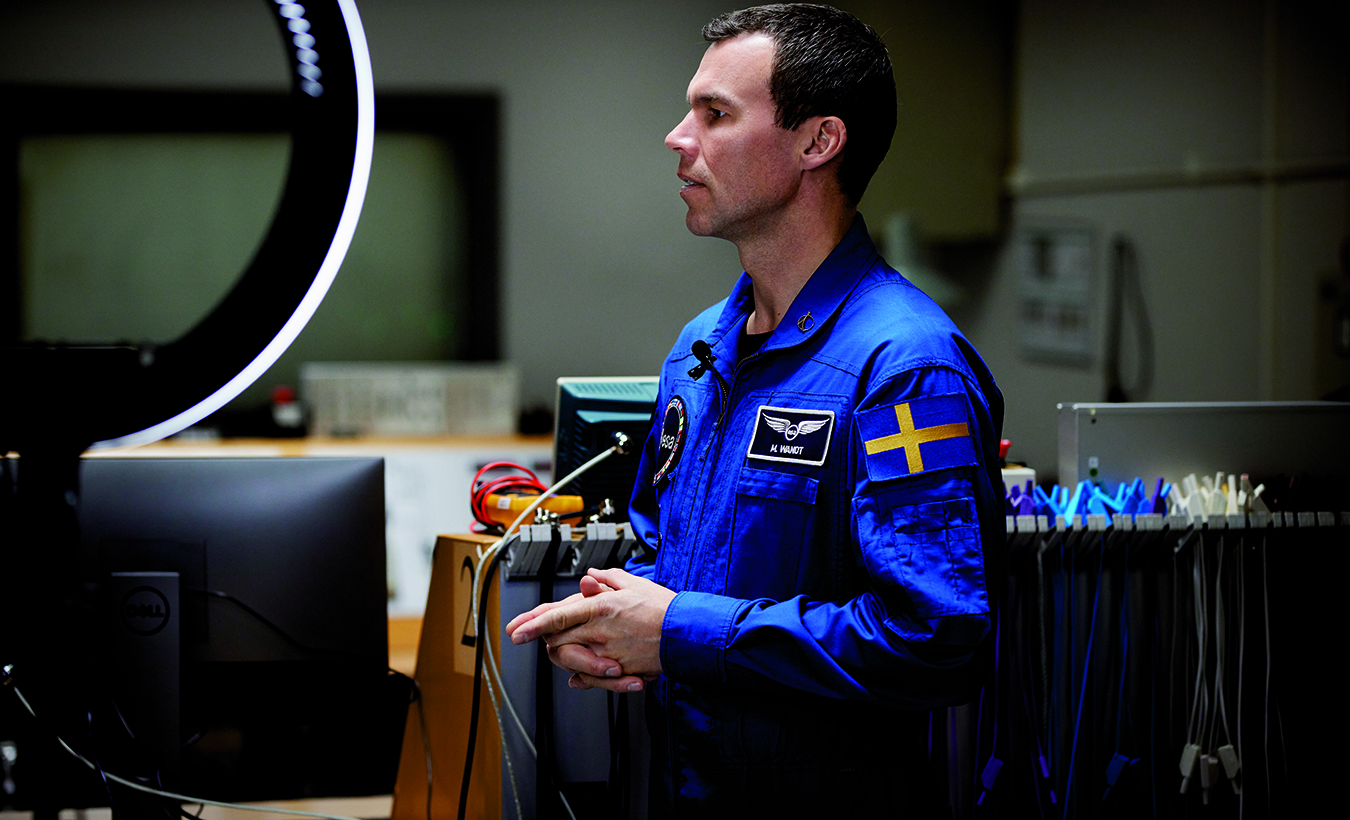From engineer to astronaut
At the beginning of the year, astronaut Marcus Wandt became the third Swede to travel to space. Fun fact: His incredible journey started as an electrical engineering student at Chalmers University of Technology in Sweden.
-
 Photo: Anna-Lena Lundqvist
Photo: Anna-Lena Lundqvist -
-
On January 17, 2024, the Falcon 9 rocket launched from the Kennedy Space Center on Florida's east coast, carrying Swede Marcus Wandt and his four colleagues to the International Space Station (ISS).
“The launch is really exciting, especially when you're lying there watching the countdown and then you feel the whole rocket come to life. On the way up, you get a great sense of speed because it accelerates straight up, unlike airplanes,” he said in a filmed interview when he returned to his alma mater during the spring of 2024.
During his two weeks on the ISS, Marcus Wandt conducted experiments on stem cells for Uppsala University and on ergonomics for the Royal Institute of Technology (KTH). In addition to these, he participated in around 20 international experiments in microgravity along with the rest of the crew. In total, they planned for over 80 hours of research work during their stay aboard the space station.
“It was a very intense mission and there was always lots to do, but it was incredibly fun and dynamic as well. One moment you’re doing maintenance on something, replacing sensors or equipment. The next, you might be talking to school children on Earth and explaining what we do and what it is like to be in space. Or controlling robots that were still down on Earth, which I thought was very fun. There were so many different tasks to do.” -
 Photo: Anna-Lena Lundqvist
Photo: Anna-Lena Lundqvist -
-
The path to becoming an astronaut
Marcus studied electrical engineering at Chalmers University of Technology, located on the west coast of Sweden. It was the place where he learned how to listen, voice his opinions, and make sense of his studies.
“I tried to formulate the problems or questions I had that I didn't understand," he said. "When I formulated them for someone else, it was as if I started to figure out how it all really fit together. The pieces of the puzzle fell into place.”
He wanted to become an engineer because he liked the idea of building prototypes. “I thought it would be fun to build something that would end up on a space station or something similar. However, when I saw that ESA (the European Space Agency) was looking for astronauts, it instinctively felt like something I really wanted to do.”
Even though he participated in the lengthy process of becoming an astronaut, he thought his actual chances of ever going to space were low.
“All along it was far from certain there would be any spaceflight at all. And that's true for all astronauts. A lot can happen; there can be technical issues with the rockets that cause delays for years, for example. And you have to ask yourself many questions, like, ‘Do I want to do this job without the spaceflight?’ and I concluded that I really did.”
What is his best piece of advice to someone dreaming of becoming an astronaut in the future? “Keep the dream and vision because it’s not impossible. Continue to be curious and learn as much as possible because it will always be good in all contexts. (For me) becoming an astronaut felt unlikely, but it didn’t feel impossible, and there’s a big difference between the two.”
Vedrana Sivac -
Facts about Chalmers University of Technology:
- Chalmers offers Bachelor, Master and PhD programs. All master’s programs are taught in English.
- Tuition fees: Master’s programs: approximately $16,000/year. Higher education in Sweden is free for students from countries within the European Union (EU), the European Economic Area (EEA) or Switzerland.
- 100% tuition fee waivers are awarded to two students with US citizenship each year for studies on Engineering master’s programmes.
- For more information, see the Chalmers website: www.chalmers.se/masters and www.chalmers.se/scholarships -
-
